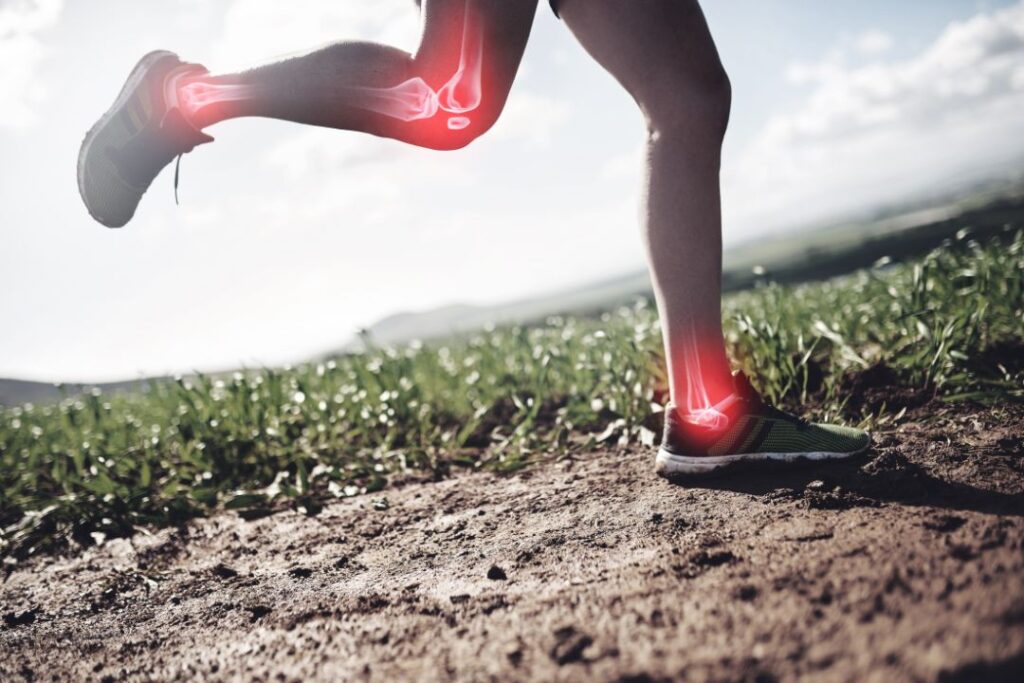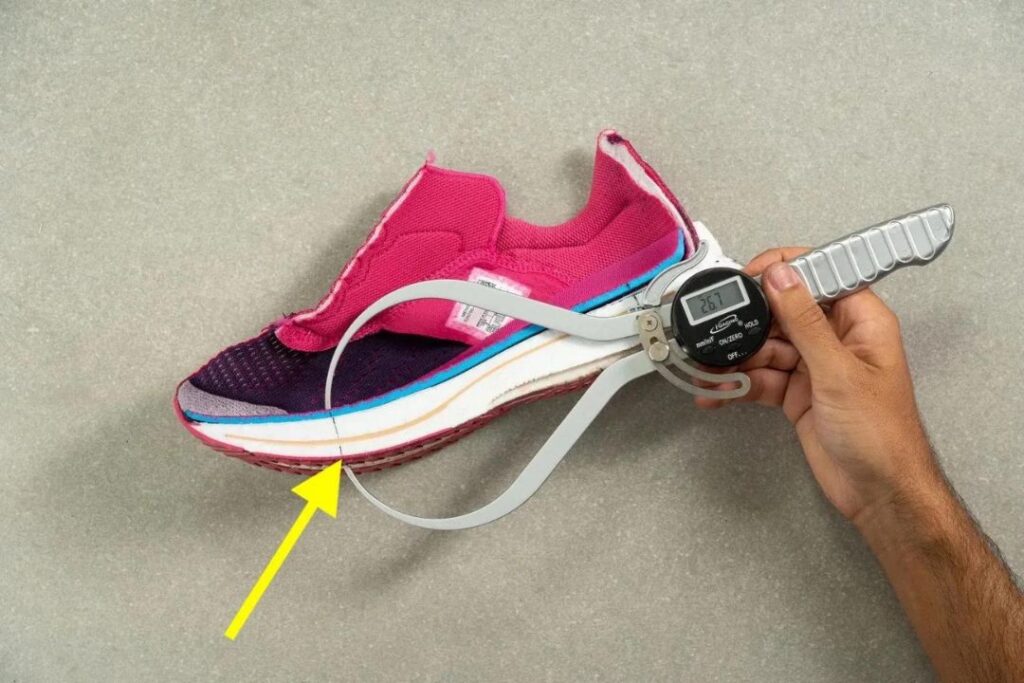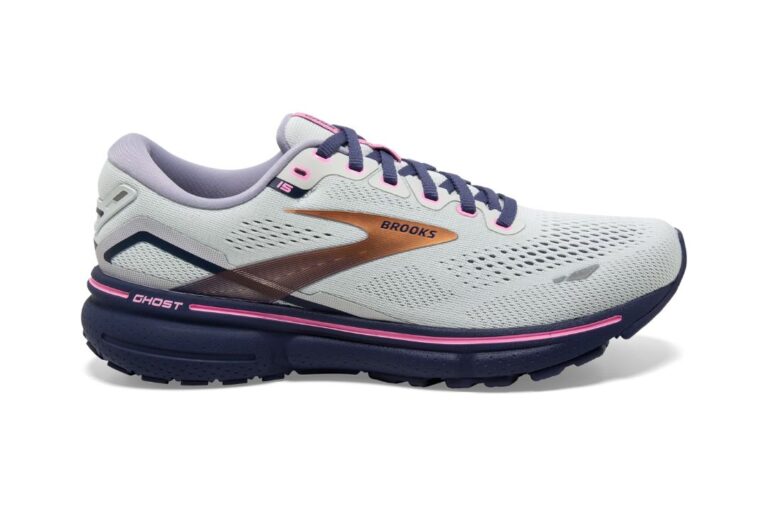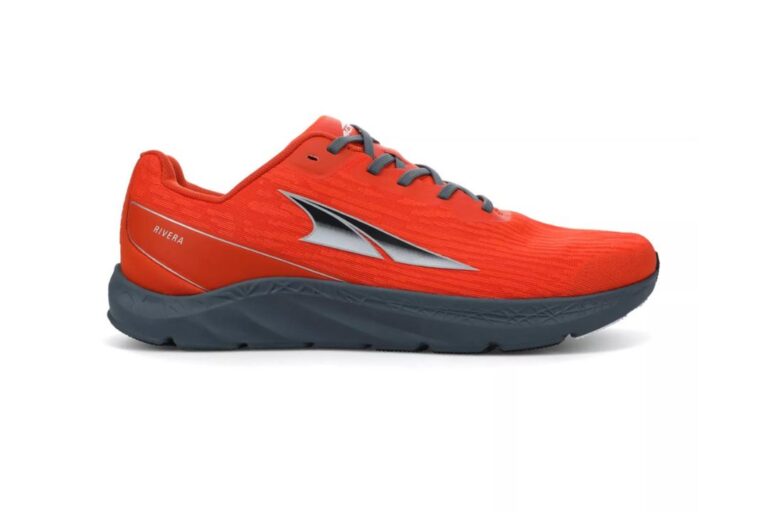
Ultimate Guide To Running In The Heat
Ultimate Guide To Running In The Heat As Arizona-based marathon runners, it’s safe to say we know a thing or two about running in the
In this article, you will learn the importance of the heel-to-toe drop in running shoes and how to choose the correct shoes based on personal injuries and pain points.

The heel-to-toe drop, or simply “drop,” refers to the height difference between the heel and the forefoot of a running shoe. It’s a crucial factor in shoe design that affects how a runner’s foot strikes the ground. Commonly, the drop ranges from 0 mm to over 15 mm in popular running shoe models.
Before purchasing shoes, you can find the drop by visiting the brand’s website and examining the shoe’s specifications. Unfortunately, not all companies measure drop the same way and it’s common for the drop listed in the shoe specs to be inaccurate. Thankfully, there is a 3rd party database with consistent and reliable measurements. The team at RunRepeat cuts every shoe they test in half and measures the drop according to guidelines set by World Athletics. We recommend visiting their website at runrepeat.com for the most accurate drop measurements.

High-drop shoes, typically those with a drop greater than 8 mm, can alleviate strain and impact forces to the ankle, Achilles tendon, and calves. However, they may exacerbate strain and impact forces to the knee and hip areas due to the increased angle at which the foot strikes the ground.

0-drop and low-drop shoes offer a more natural foot position during running. While they reduce strain and impact forces on the knees and hips, they will conversely increase strain on the ankle, Achilles tendon, and calf muscles.

There is no best drop for everyone, studies show no correlation between heel-toe drop and the risk of running-related injuries. Instead of thinking about shoes in terms of better or worse, think about them as different tools for different jobs. Choosing the correct drop depends on personal strengths and weaknesses. If you’ve experienced knee or hip injuries, opting for a low-drop shoe might be beneficial. If you’ve had ankle, Achilles tendon, or calf issues; a higher-drop shoe might be more suitable. We cannot reduce the overall impact forces of running, but we can shift those impact forces away from weak areas to stronger areas. Any time you change running shoes you should transition to them slowly and give your body plenty of time to adapt to the different distribution of impact forces.

Several studies offer valuable insights into the relationship between heel-to-toe drop in running shoes and its impact on biomechanics and injury risks. Zhang et al. (2022) investigated the effect of heel-to-toe drop on patellofemoral joint stress during running, revealing a significant increase in stress (+15%) with higher drop shoes, which may heighten the risk of knee injuries. Similarly, Besson, Morio, and Rossi (2017) explored how different shoe drops influence running mechanics in women, highlighting the potential of lower-drop shoes to reduce knee strain while possibly increasing strain on the ankle joint.
In addition to these studies, Fuller et al. (2016) conducted research focusing on minimalist shoes and their effect on running biomechanics at fast speeds. Their study, published in the Journal of Athletic Training, observed a redistribution of mechanical work from the knee to the ankle joint when running in minimalist shoes at high speeds. While this suggests a potential risk of ankle and calf injuries, there may be a reduced risk of knee injuries. These findings provide further evidence of the intricate relationship between shoe drop, biomechanics, and injury susceptibility in runners.
Choosing the right heel-to-toe drop in running shoes is essential for preventing injuries and optimizing performance. If you’re an experienced runner, choose a drop based on your strengths and weaknesses. If you often experience knee or hip issues, opt for a low-drop shoe, if you often experience ankle, Achilles, or calf issues, choose a higher-drop shoe. If you’re lucky enough to have never experienced running-related injuries, we might suggest something in the middle 4-8 mm range. Any time you change running shoes you should transition slowly and give your body plenty of time to adapt. By considering personal biomechanics and past injuries, runners can make informed decisions when selecting footwear. Remember, the right shoes can make all the difference in your running experience.
It’s time to end the debate! Share this article with your running buddies to reveal the well-studied truth: the best drop depends on the individual runner. Let’s make our choices smarter and our runs better!
Citations:
– Zhang, M., Zhou, X., Zhang, L., Liu, H., & Yu, B. (2022). The effect of heel-to-toe drop of running shoes on patellofemoral joint stress during running. Gait & Posture, 101, 196-201. PubMed Link
– Besson, T., Morio, C., & Rossi, J. (2017). Effects of shoe drop on running mechanics in women. Journal of Sports Sciences, 35(Sup1), S19-S20. PubMed Link
– Fuller, J. T., Buckley, J. D., Tsiros, M. D., Brown, N. A. T., & Thewlis, D. (2016). Redistribution of mechanical work at the knee and ankle joints during fast running in minimalist shoes. Journal of Athletic Training, 51(12), 981-986. PubMed Link

Marathoner and Co-Founder of Run Lab CBD

Ultimate Guide To Running In The Heat As Arizona-based marathon runners, it’s safe to say we know a thing or two about running in the

For runners, mental strength is as critical as physical endurance, especially during injury. This blog delves into the emotional challenges of being sidelined by injury, the link between mindset and recovery, and offers guidance through injury-induced setbacks.

CBD holds immense potential for runners looking to optimize their performance and improve their overall well-being.
Sign up for our email list and we’ll give you 15% off your order!
We promise not to spam you with tons of emails. We send out a biweekly newsletter and occasional promotions. You can unsubscribe to opt-out at any time.